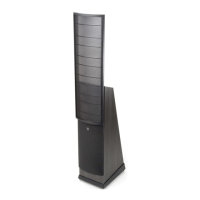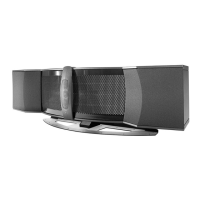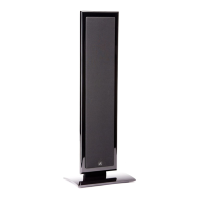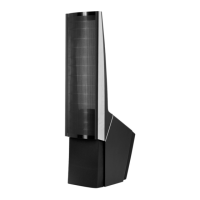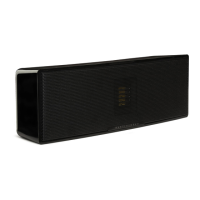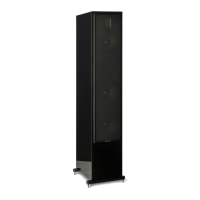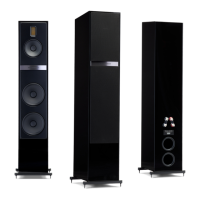Do you have a question about the MartinLogan Speaker and is the answer not in the manual?
| Type | Electrostatic |
|---|---|
| Sensitivity | 90dB |
| Impedance | 4 ohms |
| Recommended Amplifier Power | 20 - 300 watts |
| Driver Complement | Electrostatic panel, 10-inch woofer |
Steps for removing speakers from packaging and initial placement.
Connecting the speakers to power and audio sources.
Adjusting controls and listening to the system.
Adjusts bass frequencies between 30-50Hz for room tuning.
Controls logo brightness and indicates speaker status.
Connects signals for electrostatic and woofer elements.
How to connect the speakers to AC power.
Further details on connecting speakers to AC power.
Advice on speaker cables and terminal connections.
Procedures for speaker break-in and jumper clip usage.
Standard connection using one set of speaker wires.
Alternative connection using two sets of speaker wires.
MartinLogan's advice against bi-amplification for Spire.
Guide to adjusting the 35Hz control for room acoustics.
Recommended distance from walls for optimal imaging.
How room walls affect sound quality and imaging.
Minimizing reflections from side walls.
Adjusting speaker angle for tonal balance and imaging.
Fine-tuning speaker distance and spacing for optimal bass and imaging.
Tips for experiencing the full potential of the speakers.
Understanding how the room influences sound.
Definitions of standing waves, reflections, and resonances.
Principles for managing surfaces and breakup objects.
Ensuring stable speaker footing for sound quality.
How dipolar radiators interact with room reflections.
Instructions for installing spikes for stable speaker placement.
Spire's 30-degree horizontal dispersion pattern.
Spire's 44-inch line source vertical dispersion.
Comparing different dispersion methods.
Requirements for front left, right, and center channels.
Placement and function of surround and subwoofer speakers.
Core technology of the Spire loudspeaker.
Design for smooth horizontal dispersion.
Advanced diaphragm coating for resistivity.
Technologies for compact stator and diaphragm tension.
Frame rigidity and integrated bass system for low frequencies.
How to clean, ESL advantages, and amplifier compatibility.
Effects of sunlight, punctures, and electrical safety.
Handling humidity, dust, and proper vacuuming procedures.
Diagnosing and resolving no sound or low output issues.
Addressing odd noises, bass response, and soundstage imaging.
Technical details including frequency response and size.
Information on coverage, registration, and international use.
Definitions from AC, Amplitude, and Bass.
Explanations of Diaphragm, ESL, Stator, Transducer.
Terms like Imaging, Impedance, Sensitivity, Dynamic Range.
Concepts like Clipping, Distortion, Phase, THD.
